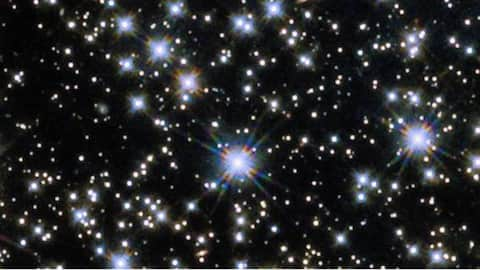Scientists may have just recorded the most-powerful explosion ever
What's the story
You may not have felt it but yes, scientists have just recorded the most powerful explosion in the universe. The cause was an extragalactic outburst. Specifically, a Gamma Ray Burst (GRB). The cosmic eruption is said to be brighter than anything observed in the past. The radiation from it blinded gamma-ray detectors, urging astronomers to call it BOAT, short for "brightest of all time."
Context
Why does this story matter?
GRBs are massive explosions. They generate more energy in seconds than our Sun will produce in its 10-billion-year lifespan. The radiation from the GRB in question was recorded on October 9, 2022. As per astronomers, an event of this scale takes place only once every 10,000 years. Several leading institutions are already studying the data to understand what happened.
Explanation
The GRB was 70 times brighter than the previous ones
Dubbed GRB 221009A, the explosion was 70 times brighter than the ones observed so far. There is also a good chance that this is the brightest GRB to reach our planet since human civilization began. Researchers say the signal from GRB 221009A had been traveling for roughly 1.9 billion years before reaching Earth, making it one of the closest known "long GRBs."
Quote
GRB 221009A is "extremely extraordinary"
"It is just an absolutely monstrous burst. It is extremely extraordinary; we've never seen anything remotely close to it," said Eric Burns, an assistant professor of physics and astronomy at Louisiana State University.
Detail
GRBs fall under two classes based on their duration
There are two different classes of GRBs, based on their duration: short GRBs, which last about two seconds or less, and long GRBs which can go on for several minutes. The short variety is formed due to collisions of neutron stars, the dense remnants of giant stars. Long GRBs are generated by black holes which originate when massive stars collapse under their own weight.
Information
How are long GRBs generated?
As the black hole devours the surrounding material, it blasts out jets in opposite directions which are accelerated to almost the speed of light. These jets cut through the star, emitting X-rays and gamma rays as they travel across space.
Supernova
Researchers are hoping to spot a supernova
Since GRB 221009A was a long GRB, researchers expect to see a supernova, the bright super-powerful explosion of a dying star. But they have not found one yet. This could be because the GRB appeared in a part of the sky which is only a few degrees above the plane of our own galaxy, where thick dust clouds can hinder the incoming light.
Brightness
Why was the GRB so bright?
Kate Alexander, from the University of Arizona, explains that all of the energy from GRB 221009A was focused into a narrow-angle and that the beam "was focused right at Earth." "The closer to head-on we view a jet, the brighter it appears," explained NASA in a blog post. Researchers will conduct more observations with Hubble and the James Webb telescopes in the coming months.
